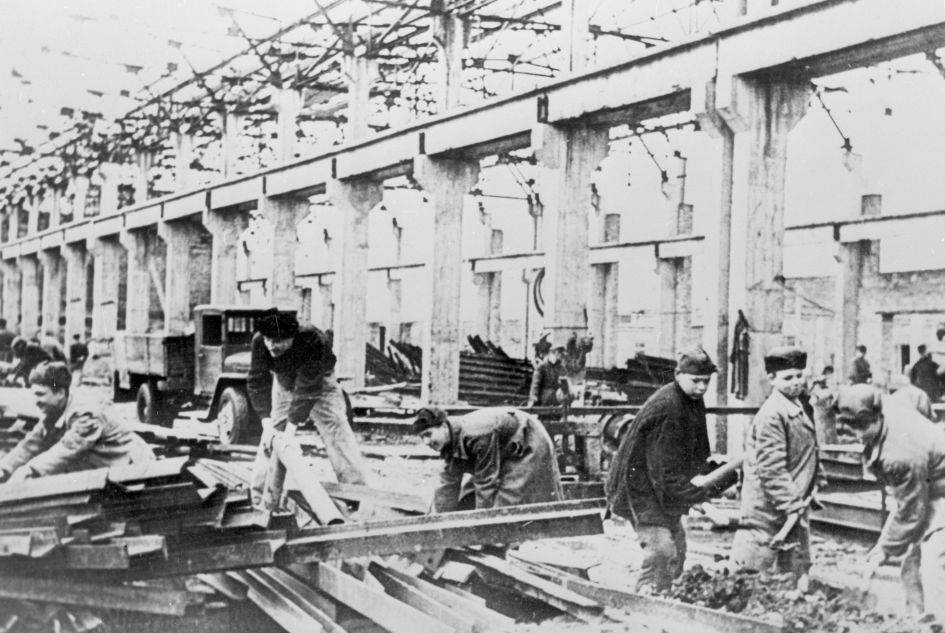On 29 May 1946, the USSR Council of Ministers adopted Resolution No 1142 “On Construction of Minsk Tractor Works”. In the post-war period, the USSR needed domestically produced agricultural machinery. The Minsk Tractor Works (MTZ) had to master the production of “Kirovets” D-35 (KD-35) medium power caterpillar tractors designed based on the model of the US Caterpillar R2. The planned production was 50 caterpillar tractors per day. Diesel (D-35) and starter (PD-10) engines would also be produced. Production would start in November 1950 and run to August 1951, with 406 caterpillar tractors slated to be made over nine months.
In July 1949, a prototype of a wheeled tractor created at the plant was put into serial production. At the suggestion of MTZ Chief Designer Ivan Drong, Minsk-developed wheeled tractors would be named “Belarus”. On 14 October 1953, the first mass-produced “Belarus” MTZ-2 tractor rolled off the main conveyor of tractor assembly workshop No 2.
In the 1960s, the Minsk Tractor Works started producing 90,000 tractors per year. In 1972, the millionth tractor was manufactured, and its operating life in agriculture would last for 10 years without overhaul.
The Minsk Tractor Works would also become the branch design bureau for the development of wheeled tractors in the USSR. The period of development of new machines was two years, which allowed for the production of many new modifications and tractor series. In production, there were special machines for work on cotton plantations, on steep slopes, as well as high-speed tractors. In the next century, the Belarus-3522 with a 355-hp engine would become renowned as one of the most powerful tractors made in Europe.
Over the course of its history, the Minsk Tractor Works would produce about four million tractors and would for some time be considered the world's largest manufacturer of agricultural tractor machinery.
Source:
Official website of Minsk Tractor Works
























